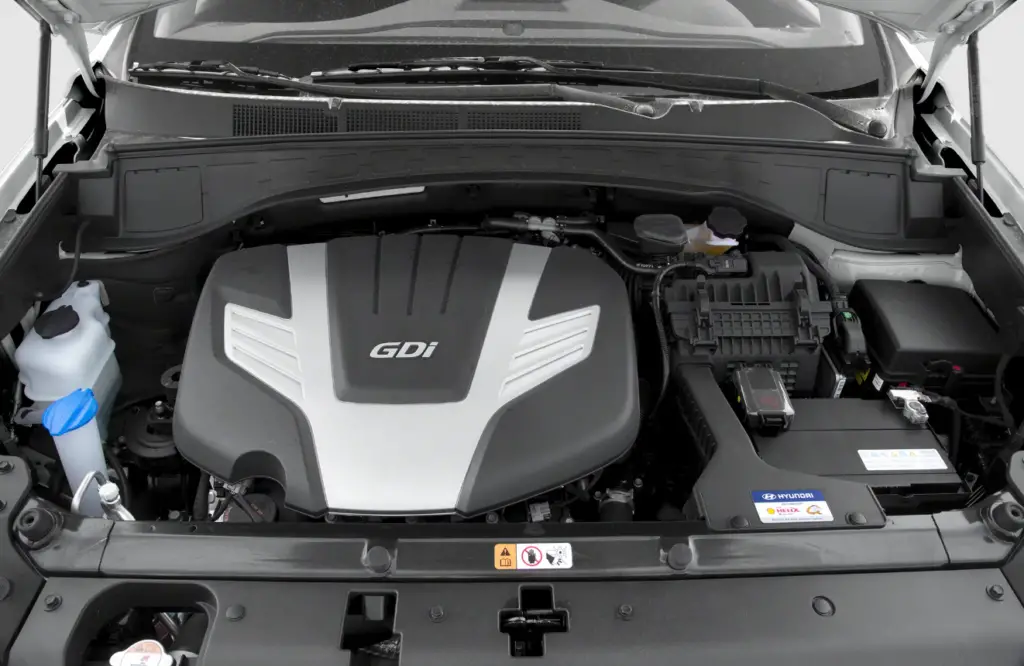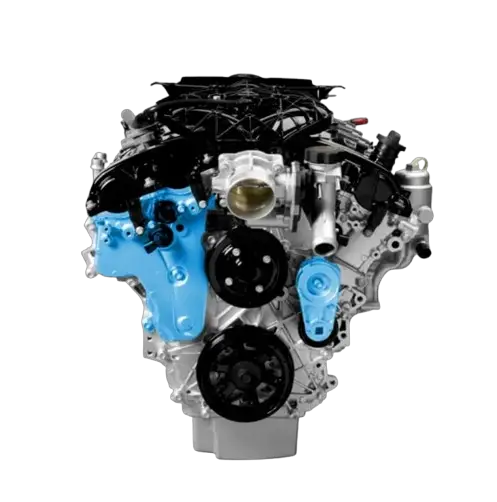The 2017 Hyundai Santa Fe has reported engine issues like stalling, knocking, excessive oil consumption, and misfires. These problems often stem from faulty sensors, fuel system failures, or component wear. Regular maintenance and prompt repairs can help prevent severe engine damage.
The 2017 Hyundai Santa Fe is a popular midsize SUV known for its spacious interior, advanced safety features, and smooth ride. Despite its many strengths, some owners have reported engine-related issues that can impact performance and reliability. Understanding these common engine problems is crucial for current owners and potential buyers alike.
This blog post delves into the most frequently reported engine problems, manufacturer responses, and preventive measures to help maintain your Santa Fe in optimal condition.

Contents
Common Engine Problems with 2017 Hyundai Santa Fe
Knowing the most common engine issues can help owners take proactive steps to maintain their vehicle’s performance and longevity.
1. Engine Stalling
Engine stalling is one of the most reported issues with the 2017 Santa Fe. Owners have experienced sudden engine shutdowns while driving, posing safety concerns. This problem is often linked to fuel system malfunctions or faulty sensors, such as the crankshaft position sensor.
Warning signs include irregular idling, hesitation during acceleration, and the engine cutting off unexpectedly. Regular maintenance and timely sensor replacements can mitigate this risk.
2. Engine Knocking and Noises
Unusual engine knocking noises from the engine are another concern. Engine knocking typically occurs when fuel burns unevenly in the combustion chamber, leading to a metallic pinging sound. Causes can range from using low-quality fuel to carbon buildup or worn engine bearings. Persistent knocking can damage engine components over time, so it’s essential to address this issue promptly by using high-octane fuel, performing regular engine cleanings, and replacing worn parts.
3. Excessive Oil Consumption
Some 2017 Santa Fe owners have reported excessive oil consumption between oil changes. This issue may result from piston ring wear or valve seal leaks, leading to reduced engine lubrication and potential damage. Hyundai has acknowledged this problem in some cases and provided repairs under warranty. Monitoring oil levels regularly and addressing leaks early can help prevent severe engine damage.
4. Check Engine Light Illumination
The check engine light (CEL) is a common warning for various engine-related problems. In the 2017 Santa Fe, it can be triggered by issues such as faulty oxygen sensors, loose gas caps, or more severe engine malfunctions. Diagnosing the cause typically requires an OBD-II scanner. Ignoring the CEL can lead to more significant problems, so timely diagnostics and repairs are crucial.
5. Engine Misfires
Engine misfires occur when the engine’s cylinders fail to ignite properly, causing rough idling, reduced power, and poor fuel economy. Common causes include ignition coil failure, worn spark plugs, or fuel delivery issues. Replacing spark plugs and ignition coils as part of regular maintenance can help prevent misfires and maintain engine performance.
Manufacturer Recalls and Technical Service Bulletins (TSBs)
Hyundai has issued recalls and Technical Service Bulletins (TSBs) to address engine problems in the 2017 Santa Fe. Notable recalls have involved issues like engine stalling and oil leaks. Owners should check their Vehicle Identification Number (VIN) on Hyundai’s official website or contact a dealership to verify recall status. TSBs provide dealership technicians with repair guidelines for known issues, often improving repair efficiency and accuracy.
Preventive Maintenance Tips
Consistent and thorough maintenance is essential for preventing engine issues in the 2017 Hyundai Santa Fe. Following Hyundai’s recommended oil change intervals of every 5,000 to 7,500 miles with the proper oil type (typically 5W-30 or 5W-40) can significantly improve engine health.
Regularly checking fluid levels, replacing air and fuel filters, and promptly addressing any unusual sounds or performance changes can help avoid costly repairs. Staying proactive with vehicle maintenance not only extends the engine’s lifespan but also ensures a safer and more dependable driving experience.

Repair Costs and Warranty Coverage
Repair costs for engine issues vary widely. Minor repairs, like sensor replacements, can cost around $300, while major repairs, such as engine rebuilds, can exceed $3,000. The 2017 Santa Fe came with a 10-year/100,000-mile powertrain warranty, covering many engine-related repairs. Extended warranties and aftermarket coverage options are also available for added protection.
Frequently Asked Questions
Here are some FAQs about engine problems with 2017 hyundai santa fe –
- Is the 2017 Hyundai Santa Fe prone to engine failure?
While not widespread, certain engine problems like stalling and excessive oil consumption have been reported by some owners. - Are there any recalls for engine issues on the 2017 Hyundai Santa Fe?
Yes, Hyundai has issued recalls for specific engine-related problems. Owners should check their VIN for active recalls. - How much does it cost to fix engine problems in a 2017 Hyundai Santa Fe?
Repair costs range from $300 for minor issues to over $3,000 for significant engine repairs. - What can I do to prevent engine problems in my 2017 Santa Fe?
Regular oil changes, using recommended fuel, and addressing early warning signs can help prevent major engine issues. - How do I know if my Santa Fe’s engine issue is covered under warranty?
Check the vehicle’s warranty booklet or contact a Hyundai dealership to confirm coverage for engine repairs.
Conclusion
The 2017 Hyundai Santa Fe remains a strong contender in the midsize SUV market, but engine issues such as stalling, knocking, and oil consumption have been reported. Proactive maintenance, timely repairs, and awareness of recalls can help owners minimize risks and keep their vehicles running smoothly. Staying informed empowers owners to make smart decisions about their vehicle’s care and longevity.